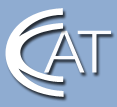Explore high-paying careers in clean, high-tech Connecticut manufacturing.

Educators: Externships
Work-based Learning Projects for the Classroom
Project: Cold Glycol Design
Name of NGM Educator: Odell Glenn, Assoc. Professor Engineering, Manchester Community College |
Name of Host Company: Hamilton Sundstrand, United Technologies Corp. |
| Grade Level: For Freshman/Sophomore level community college students |
Student Work Types:
|
Task Abstract: To come up with a new design for cold glycol to flow through a testing machine at Hamilton Sundstrand. |
Task Objectives: To design a new system that would satisfy pressure, temperature and design conditions with a material that is rarely used. |
Esssential Understandings/Questions:
|
Task Description: Through field trips and class visits as well as preparation in thermodynamics and fluid mechanics, the studetns iwll be able to come up with a design solution. The intent is to size and design a cold glycol system that will provide the test laboratories at Hamilton Sundstrand with minus 18 degree Fahrenheit glycol flowing in a closed loop system at 12 to 15 gallons per minute (gpm). The system will have a total cooling capacity of 16 tons. Note that this cooling capacity is rated at the operating temperature. The students may design a conventional chiller-based cooling system or consider using a liquid nitrogen cooled heat exchanger cooling system. The design must incorporate the following:
The students will provide a written report that will include:
|
Resources Required: Engineers from Hamilton Sunstrand |
Prior Learning Required: Thermodynamics, Fluid Mechanics, Algebra |
| Educator Comments: |





